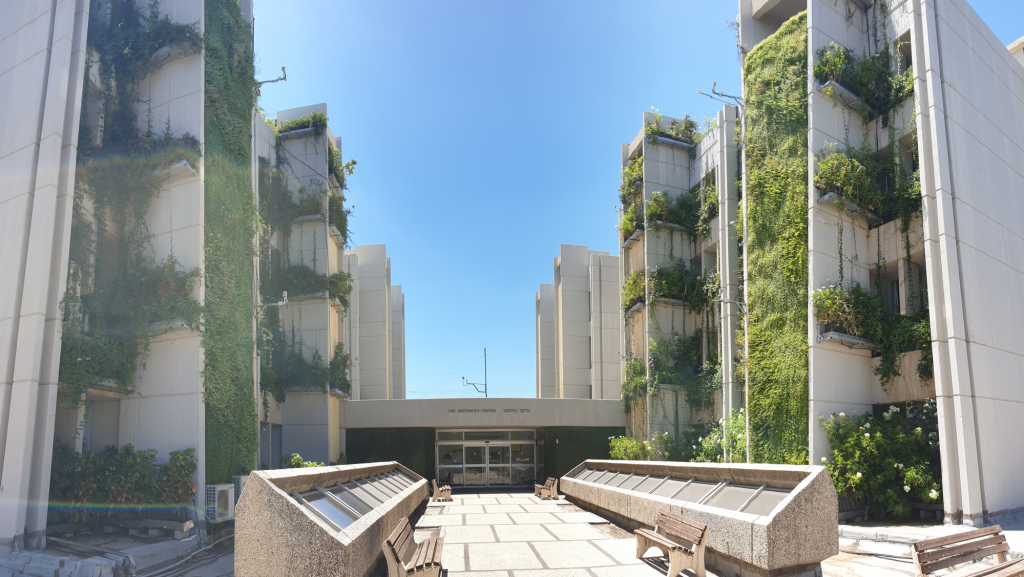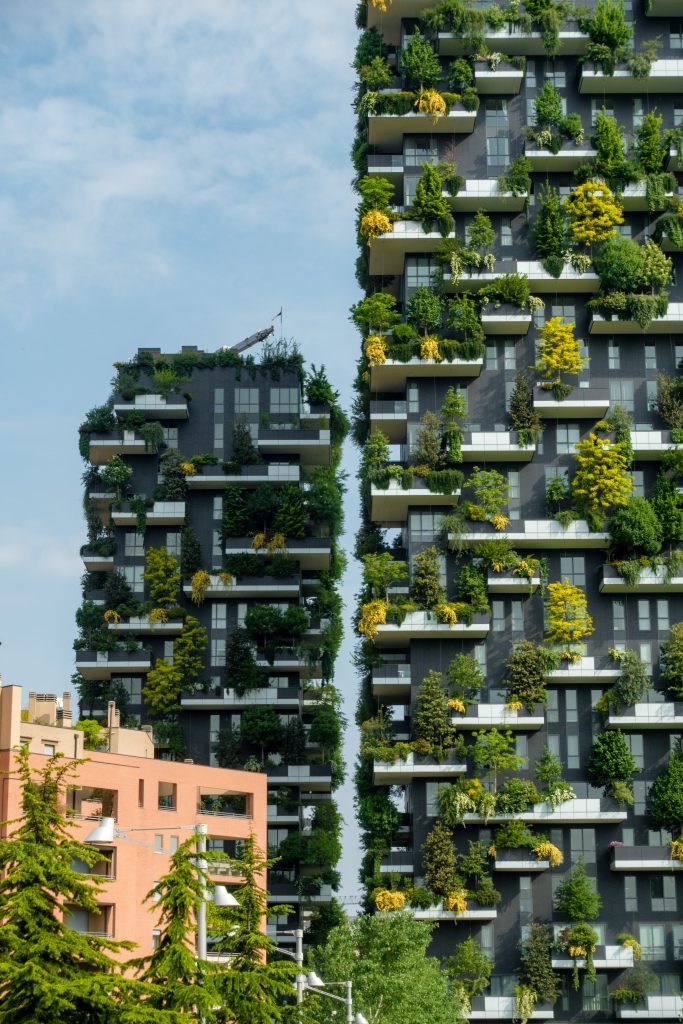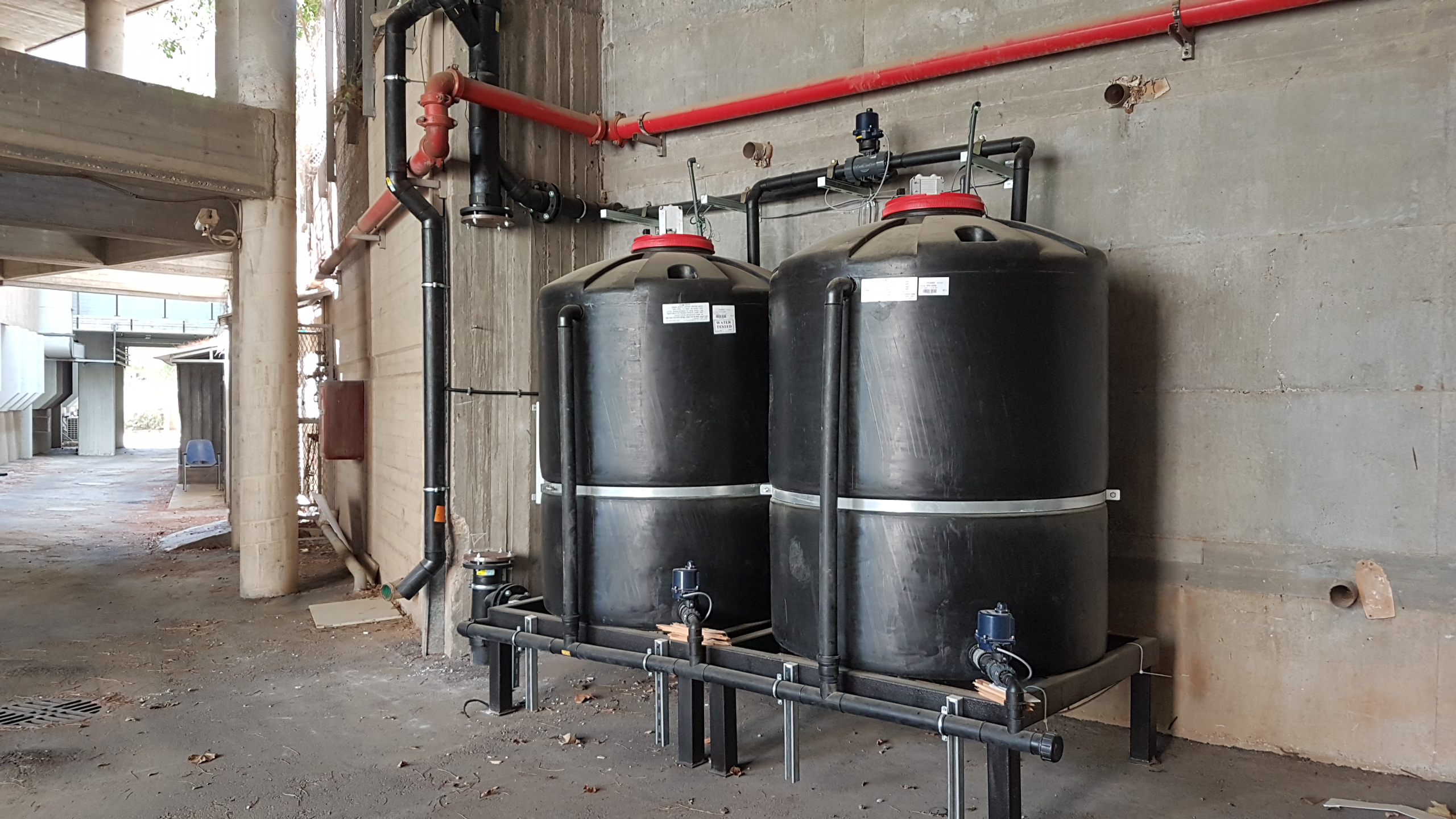Can Plant-Covered Buildings Cool Things Down?
August 5, 2021With each passing summer, cities are getting hotter and more unbearable. With the demand for cooling at an all-time high, a new Israeli study investigates the real-scale benefits of living green buildings on the urban environment and human health.
You don’t realize how small you are until you find yourself walking on a sidewalk in the middle of a city surrounded by hundreds, thousands, and often millions of people, and it’s hard to conceptually fathom the amount of people living, breathing, and working in that city, isn’t it? But everything you do whether its cleaning dishes in your apartment, throwing away less than a week’s worth of garbage, turning on the air conditioner, or driving to and from work, there are hundreds of thousands––even millions––of others doing the exact same thing, thereby generating an enormous cumulative, concentrated impact to the environment.
Currently, the world’s population stands at a staggering 7.8 billion people, and more than half of those people, approximately 55%, are living in concentrated urban centers, or cities. The global population is even projected to grow by an additional 2 billion or so persons by 2050, and by that time, experts predict 68% of the population will take up residence in cities. Israel already exemplifies this trend to the extreme as 92% of Israelis presently live throughout the country’s many cities and towns.
With the climate crisis looming over us, the vast majority of scientists conclude that our anthropogenic activities have undoubtedly accelerated the rate of climate change and that our nonstop population growth only intensifies this trend. Solving this existential crisis therefore requires well-placed restorative actions and initiatives to reverse course, and what better place to start implementing change than the areas that host the most people and generate the most pollution? Cities.
This has given credence to the idea to transform cities into sustainable ones to combat the effects of climate change more effectively, particularly the urban heat island effect in which cities become many degrees hotter than their rural outskirts because of the lack of green spaces and the abundance of heat-absorbing concrete and asphalt that are used in virtually all aspects of urban infrastructure. As a result, this spawns greater energy costs for cooling, compounds concentrated urban air pollution, and prompts greater amounts of heat-related illnesses and mortality.
Integrating green buildings adorned with various vegetation into the urban landscape is one such strategy put forth by architects and city planners to deal with this intensifying phenomenon as they are said to provide natural cooling benefits among other things like improving local air quality and bringing a green-lush aesthetic to an otherwise concrete-grey urban landscape. But their eye-catching features begs the question: is it all for show, or is it a truly worthwhile investment? Luckily, a new Israeli study has set out to determine the answer.
The Real Deal

In recent months, the students and lecturers of Bar-Ilan University have been surprised to discover green walls covering the facades of two main buildings on campus, which include an assortment of plants alongside advanced irrigation systems. Although pleasing to look at, the move was not meant to enhance campus aesthetics, but rather to quantitatively assess whether these kinds of green buildings actually improve surrounding local environmental conditions.
Led by Professor Itamar Lansky and doctoral student Noa Zuckerman, this groundbreaking study marks the first time large-scale green walls have been erected for the specific purposes of academic research, which seeks to examine their impacts on the urban environment in terms of thermal microclimate comfort.
“This practice is considered very trendy today, but no studies of this magnitude have yet been conducted,” says Zuckerman. While prior studies have indicated the environmental value and thermal comfort of green walls as they significantly reduce short and long-wave radiation emanating from them to their immediate environment, their results are often based on theoretical models or small samples. By contrast, Zuckerman puts it best, “the experiment at Bar-Ilan is the largest controlled experiment in the world, and this is the first time that live research has been done on real structures.” In other words, it’s the real deal.
The study was presented at the Israel Society for Ecology and Environmental Science’s 49th Annual Conference, and it sought to answer the following research questions: what are the potential impacts for public health and environmental conditions within cities, are they a significant strategy for dealing with the climate crisis, and are buildings covered with vegetation the future of the urban environment?
To answer these questions, Lansky and Zuckerman decided to utilize three identical buildings on Bar-Ilan’s campus where they applied a vertical forest to one building covered in upright bushes and climbers, a green wall to the second building covered in smaller plants packed densely together in small modules, and nothing to the third building to act as a control subject for the experiment.
“Our walls are designed in a sophisticated way with smart irrigation systems and sensors to monitor vegetation. The aim is to control the wall in the most effective way for the needs of the research,” Zuckerman elaborates.
The data collected by the researchers show an improvement in thermal comfort in the vicinity of the green walls, with the effect on air temperature being the most noticeable, especially during the summer months in the sun-exposed southern slope.
After 18 months of recording temperatures and humidity both inside and outside of the buildings,
indoor air temperature during the summer closest to the vertical forest was 1.9°C (3.4°F) cooler than the control building. Indoor air temperature nearest to the green wall, on the other hand, was 2.41°C (4.3°F) cooler than the control. But in the winter months, both the vertical forest and the green wall naturally warmed indoor air temperatures by 2°C (3.6°F). On the path between the green buildings, outdoor air temperatures were about 1°C (1.8°F) cooler than the path nearest to the control building, and in the winter, the researchers found that the green-adjacent path offered one degree of warmth over the path closest to the control building.
Although cooling a space with the help of plants could lessen a building’s energy cost, the cost of special maintenance could plausibly become more expensive. However, this potential drawback is on Zuckerman’s radar.
“We understand that hanging vegetation is difficult to reach, so we examined the best way to maintain a green wall because maintenance should be simple and efficient through the use of technology,” she says. “Therefore, a significant part of the research is to understand how the maintenance of the walls can be streamlined.”
Next Step: Scale Up

Green buildings adorned with vegetation and trees on their walls have been growing in recent years and have become an architectural trend throughout the world, representing the green building movement, which sees the need to add and promote vegetation on the facades and roofs of buildings to cut on energy consumption and air pollution.

Designed and completed in 2014 by Italian architect Stefano Boeri, the iconic Bosco Verticale in Milan is one of the first tower projects to display a vertical forest on every balcony floor, and it is without a doubt one of the most talked about buildings in the last decade. The towers host about 800 trees of various sizes, 15,000 perennials, and 5,000 kinds of various shrubs. The greenery surrounding all the facades of the building filters some of the sun’s radiation and thus allows a reduction in energy consumption for indoor heating and cooling. Meanwhile it raises oxygen and reduces carbon dioxide levels in its immediate environment, thereby improving air quality by filtering pollutants and fine particulate matter.
Photo by Daniel Seßler on Unsplash
In the next phase of Lansky and Zuckerman’s study, they plan to escalate their size of their samples from the level of neighborhood to one of greater urban scale.
“Our goal is to test the impact of green walls not just on a single building, but on an entire neighborhood. The intention is to look at a number of buildings that are surrounded by green walls to understand their impact at the neighborhood level,” Zuckerman explains.
“The study also includes a psychological side, which has not been studied at all so far. We examine how the addition of green walls affects people’s moods living in the area. There is an opportunity here to explore the environmental aspect and all that it implies. In the end, it will give us a broader picture of the impact of green walls on the environment and humans.”
With human population on the rise, the cumulative climate effects of continued anthropogenic activities alongside current infrastructure are expected to worsen. Erecting green buildings of this kind, however, could very well decelerate those effects, and it is an option well worth exploring further.
This ZAVIT Article was also published in The Jewish Journal on 4 Aug. 2021







